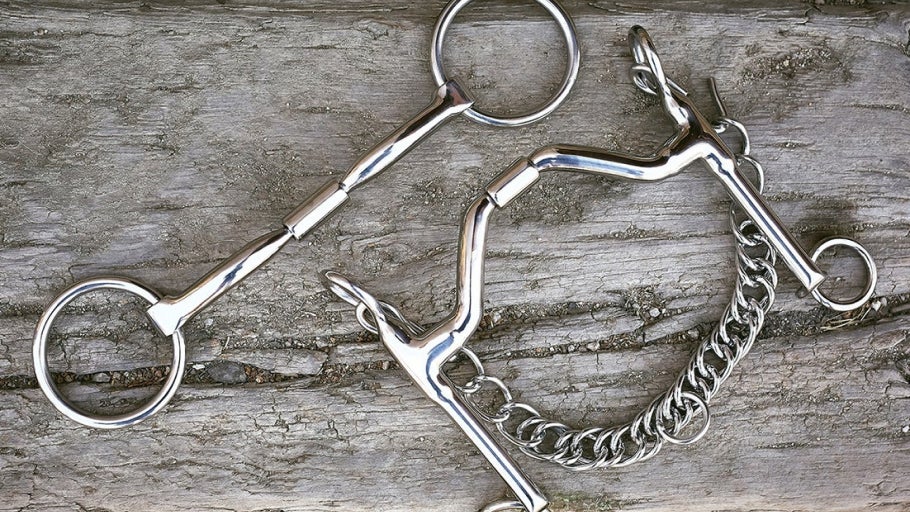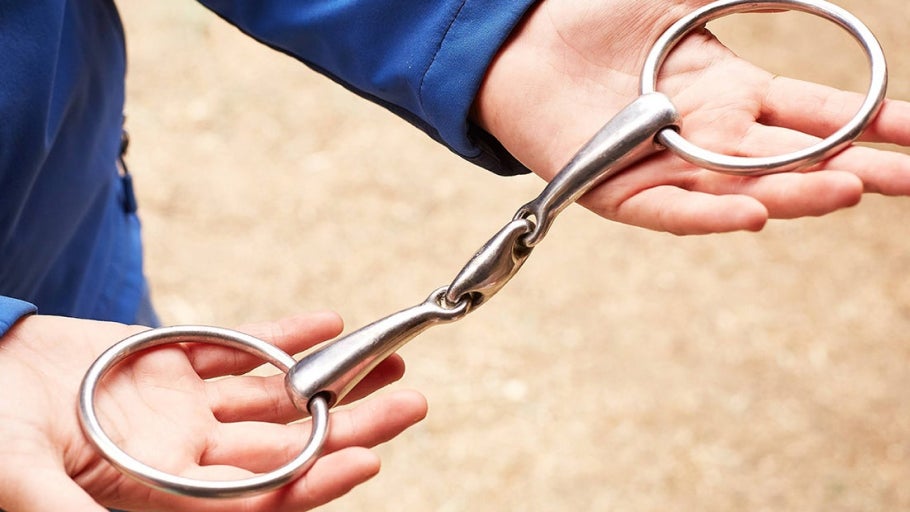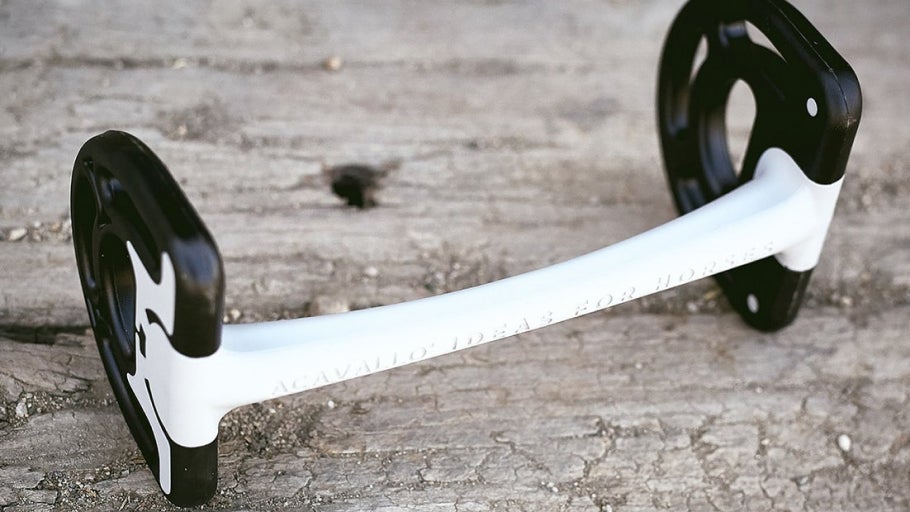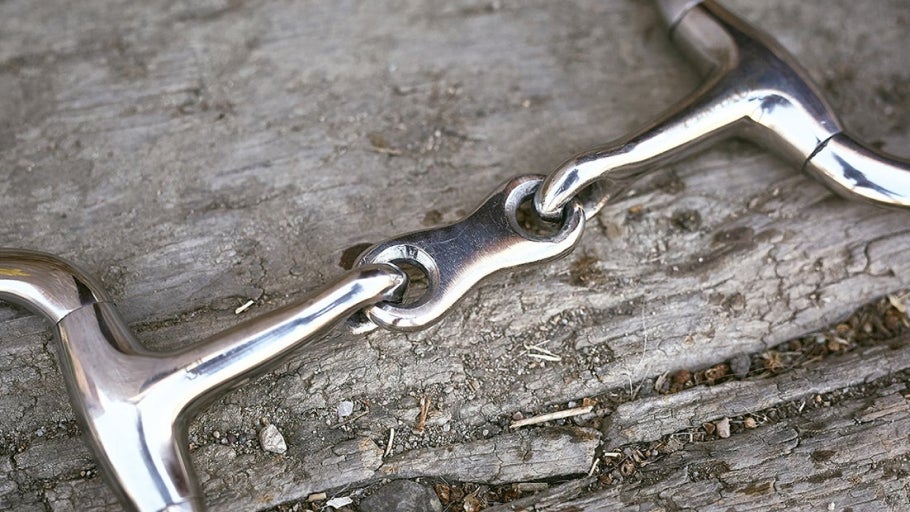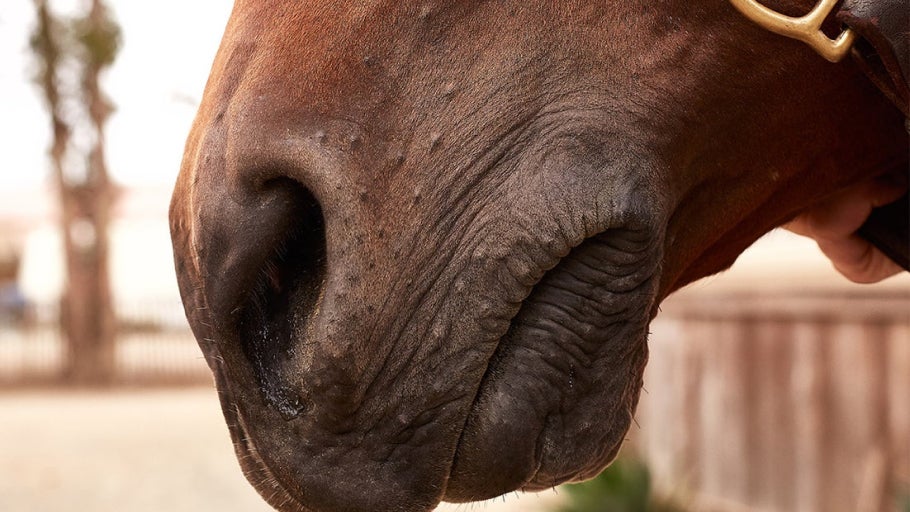
Fager Bit Buying Guide
Regardless of the discipline you and your horse ride, having a solid base in flatwork and dressage is crucial. As we and our horses and we improve, we ask them to be more sensitive to our aids and respond more quickly. Using equipment that communicates our intentions while allowing the horse to perform their best should be a main priority.
While there will always be intrinsic pressure points from the bit, it is possible to divide the pressure up so your horse is as comfortable as possible; this is the philosophy that Fager Bits stands behind with every design they create. Developed in collaboration with veterinarians, the brand is committed to modernizing bit design through scientific research.
Factors to Consider
When picking a bit, there are multiple factors that could point you and your horse in the right direction. The mouthpiece shape is going to be the most influential aspect of the bit; other parts to note are mouthpiece material and outer ring variation (think loose ring compared to an eggbutt bit). It is recommended to determine which style of mouthpiece and cheekpiece your horse needs before choosing between bit materials.
If you are looking beyond a snaffle bit, there are more considerations to keep in mind, such as the amount of leverage the bit provides and its compatibility if you're working with a double bridle. As we move up through the levels of dressage and ask our horses to perform complex movements in a double bridle, it becomes crucial to use equipment that enables them to perform their best.
While using two bits (a weymouth and bradoon) will naturally take up more room in the mouth, Fager bits are designed with thinner bars and angled ports that provide freedom for the tongue to encourage soft and consistent contact. With all of these factors in mind, let's first take a closer look at the materials Fager uses.
Fager Bit Materials: Behind the Grey & Blue
Fager bits showcase multiple revolutionary designs, from their thinner bars to redesigned mouthpieces. Fager works with two different materials: titanium (blue) and sweet iron (grey). Titanium is lighter than sweet iron, so the lack of weight creates less constant pressure within the mouth. Because of this, the titanium bits are thought to create a quicker response from the horse.
Think of the titanium bit as more acute and only communicating aids to your horse when you want it to. The sweet iron bits are more chronic and provide the horse with a constant conversation because of the heavier weight.
Titanium
Fager's surgical-grade titanium is completely flavorless and does not need any covering. If your horse does bite the bit, it shouldn't become rough. Additionally, the standout blue color will never rust or fade, though bite marks may become visible over time. These titanium bits are meant to last a lifetime!
Sweet Iron
The sweet iron material is meant to rust as it ages in order to give the bit a flavor. A good key to follow is that the more brown the bit becomes, the more tasteful it will be. It is important to clean and dry these bits after every ride to ensure that an uneven layer of rust doesn't develop. If a rough, uneven layer does develop, it is recommended to clean it with something that contains a small amount of phosphorus (like Coca-Cola).
Fager Bits: Designed for Horse Comfort
You will notice that all Fager bits feature thinner bars and rounder joints than many other options. While thinner bars are traditionally thought to be sharper than thicker bits due to pressure on a smaller surface, Fager disputes this claim. They have found that thinner bars and rounder joints provide more freedom inside the mouth, so the horse's tongue isn't restricted. Thicker bits may cause too much pressure on the horse's upper and lower bars when their mouth is closed. It is important to note that even with a thinner bar and lighter material, bit pressure is still present.
Another source of unwanted pressure can come from the centerpiece of the bit. The designers behind Fager have seen severe damage to the bars and palate due to long centerpieces. That's why they use short centerpieces to ensure the bit sits comfortably in the horse's mouth without causing unwanted pressure on the palate. In conjunction with shorter centerpieces, Fager bits use registered smooth joints; these improved joints allow complete fluidity and freedom in the horse's mouth to prevent interference with their palate.
All of these technological advances by Fager are made with the horse's utmost comfort in mind. Fager works with the horse's natural build to create better communication from the start, meaning that riders and horses can work with the bit, rather than around it. If the horse is uncomfortable and uncooperative with their bit, it can cause frustration and headaches. A comfortable horse makes for a comfortable ride!
Bit Acceptance vs. Bit Rejection
Fager has designed each of their bit styles to fit the horse's natural anatomy. The bit style your horse needs is dependent upon the shape of their mouth. If they have sharp bars or a big tongue, they are going to need a different shaped bit than a horse with wide bars or a skinny tongue. If you're unfamiliar with these terms and how bits interact with your horse's mouth, check out our guide on guide on horse bit and mouth anatomy.
There are variations in mouthpieces to work with these anatomical differences, such as: curved and straight bars, single joints and double joints, rollers and no rollers, and so many more! When you're searching for the best bit, it's smart to try a few out. Testing different mouthpieces and cheekpieces can help determine which attributes your horse likes and dislikes. Different indicators toward bit acceptance or rejection include whether your horse is:
| Bit Acceptance | Bit Rejection |
| On the contact | Off the contact, reluctant |
| Quiet in the mouth | Fussy in the mouth |
| Light in the hand | Leaning or pulling on the bit |
| In the hand | Behind the hand |
| Even to both sides | Sores, rubs, wounds |
| Flexible and adjustable | Sticking their tongue out |
| Salivating | Chewing the bit frantically |
| Relaxed in their body | Putting their tongue over the bit |
Fager Bit Cheekpieces
Knowing what mouthpiece works for your horse on the inside is step one to finding your glass slipper of bits. From there, you can determine the cheekpiece that will give you and your horse the best level of communication. Every cheekpiece has a different purpose on the bit, so read on to find out which would be ideal for your needs.
Please be aware that while we will be addressing each of Fager's cheekpieces, we do not stock every kind they offer. If you don't see the bit you are specifically looking for within Riding Warehouse's Fager bit selection, we may be able to special order directly from Fager Bits. Please reach out to our customer service for more information.
Loose Rings
Loose ring cheekpieces are designed to move freely from the mouthpiece. This gives the horse an opportunity to use its tongue in order to place the pressure from the mouthpiece higher or lower, depending on their preference. When using a loose ring, the hole where the bit ring passes through should sit just at the corner of the horse's mouth. It is wise to use bit guards to avoid any pinching when you have loose rings. Bits with loose ring cheekpieces are recommended for horses that like to lean on the bit and feel stiff. If your horse has a more playful mouth, something more stable should be considered.
Fixed Rings
Fixed rings are stationary on the mouthpiece, allowing for the rein contact to be more still toward the mouth. Bits with fixed rings encourage the horse to keep the contact toward the bit, and they create a more consistent feeling for both rider and horse. Fixed ring bits aid with steering and help horses keep a quiet mouth. If your horse is a bit unsteady in the bridle, has a playful mouth, or is green, they are likely to benefit from fixed rings.
Baby Fulmer
This design is registered by Fager and gives a combination of a loose and fixed ring. Fulmers lay close to the horse's face to aid with steering and help keep the mouthpiece steady. The loose rings are placed further away from the mouth corners, giving a downward and inward pressure. This encourages the horse to lift in the front and avoid a stiff feeling toward the bit. This unique design is FEI approved and legal for dressage.
Baucher and Loose Baucher
Pronounced "boo-shey," the Baucher cheekpiece provides a stable and framed feel. The cheek port is fixed to the mouthpiece and has a separate but fixed rein port. Fager has developed and registered a loose ring Baucher to maintain the steady mouthpiece, but with more freedom in the connection. Bauchers are useful for horses who commonly get wounds in the corners of their mouths or wear on their premolars, as the steady mouthpiece will relieve these areas from pressure to help the horse relax.
Kimblehook
The Kimblehook is a fixed ring bit, but with the option of adding leverage when you need it by adjusting the rein placement. The further down you move the rein, the more pressure will be exerted and dispersed to the chin, poll, and mouth. Due to the fixed ring aspect, a stable feeling is created—making this a suitable cheekpiece for strong, worried horses. This cheekpiece also puts the pressure further down in the mouth, which is helpful for horses who commonly get too high in the neck. Kimblehooks are always used with a chin strap or curb chain.
Universal
The universal cheekpiece is a two-ring leverage bit with a Baby Fulmer. The cheek has a separate port attachment for bridle stability, and the mouthpiece is not fixed. Altogether, this cheekpiece can work as a gag bit when placed on the lower ring or stay lighter on the snaffle ring. Due to the loose ring attachment, the mouthpiece glides and shifts pressure to the neck and mouth. A curb chain or strap can be added to this bit to divide the pressure out to the chin, poll, and mouth. This cheekpiece is designed to create a flexible and light feel while staying consistent in the horse's mouth.
Bevel
A bevel cheekpiece has a similar function as a two- or three-ring snaffle but with less leverage. Like other bits, rein placement determines the severity of the bit; if the reins are placed on the lower inner loop, it will serve as a gag bit. The bevel is intended to give a soft feeling in the hand (partially from the loose ring design), allowing for more freedom in the mouthpiece.
Show Pelham
The pelham cheekpiece is meant to be used with two sets of reins: one on the loose snaffle ring and one on the curb ring. The snaffle rein will not add any leverage, whereas the bottom curb rein will; this gives the rider the option of a leverage bit that can be idle when not in use. A bit converter can be used on a Pelham, which averages out the two effects and delivers pressure via one rein.
Double Bridle Bits
In a double bridle, two separate bits are used in the mouth at once. One is a small snaffle bit called a bradoon or bridoon, and the other is a curb shank bit called a weymouth. Each bit has its own set of reins to give each bit an idle ability. The bradoon can have loose or fixed rings and should fit the same as a normal snaffle, close to the mouth corner. The weymouth is exclusively a leverage bit that sits slightly lower than the bradoon. Additionally, the weymouth should be .5-1 cm larger than the bradoon to avoid crowding the cheek bars.
Frequently Asked Questions
How do I know which bit mouthpiece is best for my horse?
Ultimately, trial and error will give you the best answer as to what mouthpiece will work best for your horse. If you're unsure where to start, it's recommended to begin with the mildest option and work your way up. A simple single-joint or double-joint mouthpiece is a good place to begin; when combined with a fixed ring, the bit is very mild. We always encourage talking any tack changes through with a trainer! For more information on mouthpieces, check out our bit mouthpiece guide.
Do Fager bits have a front and back?
When using a Fager bit, the horse logo on the right side should always face forward, in the direction of your horse's nose. This ensures that the bit is on correctly. If your Fager bit is backward, it will be uncomfortable and cause a major disconnect between you and your horse.
How do I measure for my horse's bit size?
Depending on the type of bit, you'll need to use different "landmarks" to measure the bit correctly. In fixed ring bits, you measure from the inside of the ring, where it would touch the corner of the horse's mouth, to the same location on the other side. For plain loose rings, measure from the inner hole (where the ring goes through the bar) to the same location on the other side. For bits with wings (such as the Baby Fulmer), measure from the inside of the wing, where it would touch the corner of the mouth, to the same location on the other side.
A correctly fitted bit should not be so small that it pinches the horse's lips, but it also shouldn't be so large that the bars are majorly sticking out of the mouth. To learn more on how to measure your horse for a bit, visit our bit measuring article.
Can I use any bit at my horse show?
For most horse show associations, there are governing rules that tell you what kinds of tack you can and cannot use. We always encourage you to consult the rule book of your association or competition to know what is legal to use. To learn about which bits are legal for the disciplines of dressage, eventing, and hunter-jumpers, check out our guide on horse show legal bits.
Closing Thoughts
Picking the right bit can be a daunting task. Luckily, the minds at Fager are providing great bit options to make the process that much easier. Using technology in conjunction with equine communication, Fager has developed options for every horse and rider combination. They understand that with horses—and especially with bits—one size does not fit all. Using new metals and designs, Fager has worked to create a line of bits that generate softness from both the rider and horse. If you have more questions regarding Fager bits or bits in general, please feel free to contact our friendly customer service team at info@ridingwarehouse.com or at 1-800-620-9145. Ride on!
Related Articles

